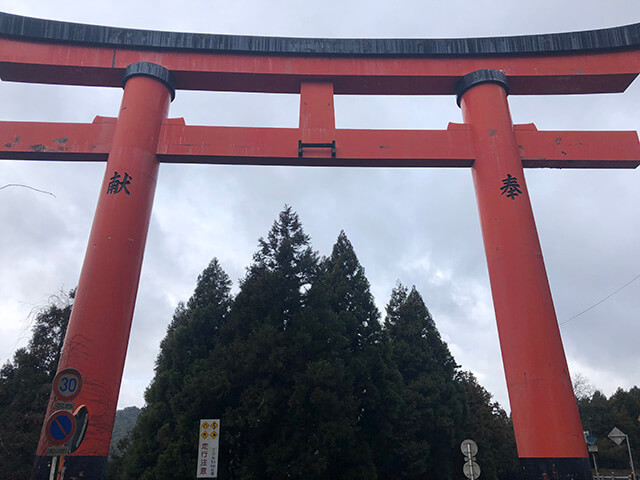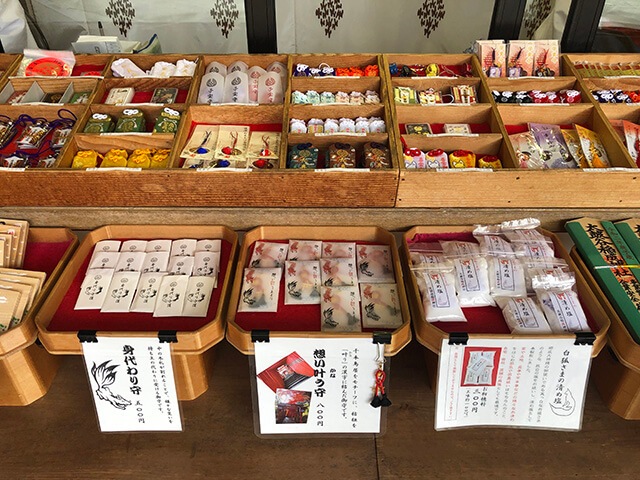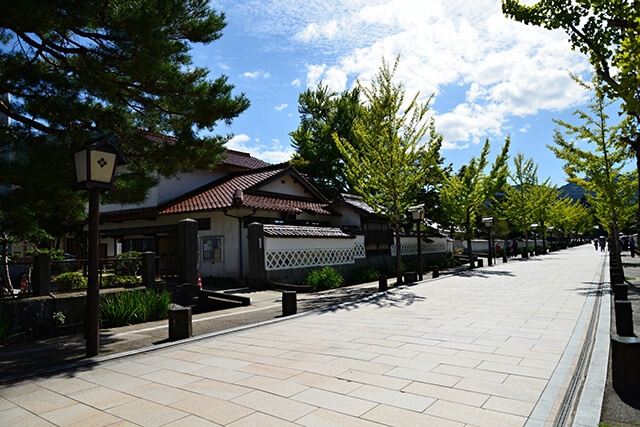
Surrounded by hills in Shimane Prefecture, Tsuwano is a charming town that’s been nicknamed the “Little Kyoto of San’in”. San’in encompasses the southwest of Honshu and is blanketed in rural landscapes that were traversed by the San’indo route during the Edo period. Tsuwano’s atmospheric townscape is imbued with a rich culture, history, and lifestyle that’s changed little over the centuries.
In this article, we’ll introduce some of the highlights of Tsuwano, including its picturesque main street and the photogenic Taikodani Inari Shrine, all of which can be explored on foot.
-
01
Taikodani Inari Shrine
![Taikodani Inari Shrine]()
Taikodani Inari Shrine
![Taikodani Inari Shrine]()
Taikodani Inari Shrine
After passing through the green mountains that lead to Tsuwano, one of the first landmarks you will notice is a big red torii gate. It serves as the entrance to the town and the Taikodani Inari Shrine, which is one of the five great Inari shrines in Japan. It was constructed in the 18th century by Norisada Kamei as a symbol of peace for his feudal clan and to protect the nearby Tsuwano Castle. The castle was torn down following the abolition of feudalism, with only a few stone foundations remaining today.
![Torii]()
Torii
![]()
A highlight of the shrine is the Senbon Torii, a series of more than 1,000 vermillion torii gates that frame the 263 steps leading up to the main precinct of the Taikodani Inari Shrine. Here you’ll find the former main hall and the newly-built main hall (which was added in 1969) where devotees come to offer candles and deep-fried tofu. It’s believed to be a favorite food of the fox, with several stone fox statues around the complex that are believed to deliver the wishes of worshippers and protect the nation. Once you reach the top, there are sweeping views across the surrounding mountains and the town, with lush greenery everywhere you look.
![]()
![]()
The entrance to the Senbon Torii is a short walk from the center of Tsuwano, and it takes around 15 minutes to climb to the main hall of the Taikodani Inari Shrine. There is plenty of parking available in the town, so it’s best to leave your car here and continue on foot.
![]()
![Luckey charm]()
Luckey charm
- Taikodani Inari Jinja Shrine
-
4.5
193 Reviews -
-
- Shimane Pref. Kanoashiguntsuwanochou Ushiroda 409
-
-
-
- 0856720219
-
-
-
- 8:30-16:30
-
View All -
02
Tonomachi-dori Street
![Tonomachi-dori Street]()
Tonomachi-dori Street
![]()
Lined with Edo-era buildings, Tonomachi-dori is the main street in Tsuwano and retains the atmosphere of a time gone by. Narrow moats traversed by bridges line the route, with the waterways inhabited by carp that were originally designed to eat mosquito larvae and help control the spread of the plague. It’s believed that between 300 and 500 colorful fish now call the moats “home” and grow to a healthy size thanks to the regular feeding by tourists.
![]()
![]()
While you’re exploring the street, take note of the historic Catholic Church, the ruins of Hanko Yorokan (a Tsuwano Clan-run school) and the remains of the county government office. In amongst the historic buildings are quaint cafes serving local specialties that you can eat while strolling the street.
![]()
![]()
Be sure to try Sara no ki’s Yaki Ice (350 yen), which features hot bread filled with ice cream, or feast on the sweet Naorai Mochi from Sanshodo (290 yen for two pieces or 730 yen for five). Tsuwano is also renowned for its sake breweries, including the Furuhashi Shuzo that boasts a 140-year history. You can sample some of their original products on-site, with Furuhashi Shuzo's Ui Ginger (1,500 yen incl. tax for a 500ml bottle) not to miss.
![]()
- Furuhashi Brewery
-
3.5
5 Reviews -
-
- Shimane Kanoashi-gun Tsuwanocho Ushiroda Ro 196
-
-
-
- 0856720048
-
View All -
03
Discover the rich culture of Tsuwano
![]()
If you want to delve into the cultural heritage of Tsuwano, head to the Tsuwano Japan Heritage Center. It features several informative displays and videos introducing the region’s history, as well as the "Tsuwano Past and Present - Walking the One Hundred Views” exhibit that depicts the former streets and activities of residents.
![]()
The first floor of the museum displays the One Hundred Views of Tsuwano, a series of drawings by Satoharu Kurimoto who once served the feudal lord. They are divided into various themes - "four seasons", "nature", "history and culture" and "food" - with the opportunity for visitors to compare the historical scene to how it appears in the modern-day.
![]()
On the second floor of the museum are several displays explaining the culture and history of the town, as well as costumes from its festivals. Of particular note is the exhibit about the Sagimai, a performing arts ritual that takes place from July 20 to 27 each year. Its traditional costumes are designed to resemble a white heron and there’s a bronze statue of a dancer in action on Tonomachi-dori.
![]()
The Tsuwanocho Japan Heritage Center is located halfway between the entrance to Tonomachi-dori and Tsuwano Station. There are resident guides on hand at the museum if you would like a more in-depth explanation of the exhibits.
![]()
- Tuwanomachinipponisan Ctr
-
4.0
19 Reviews -
-
- Shimane Pref. Kanoashiguntsuwanochou Ushiroda Russia 253
-
-
-
- 0856721901
-
View All -
04
Because the past exists, there is the present: Feeling the rich history of Tsuwano
Since it was first established as a castle town, Tsuwano has managed to retain its rich history and culture while bringing it to life for a new generation. Not only is it easily accessible by car but it lies at the terminus of the SL train that runs from Shin-Yamaguchi Station.
![]()









 Go here
Go here




















